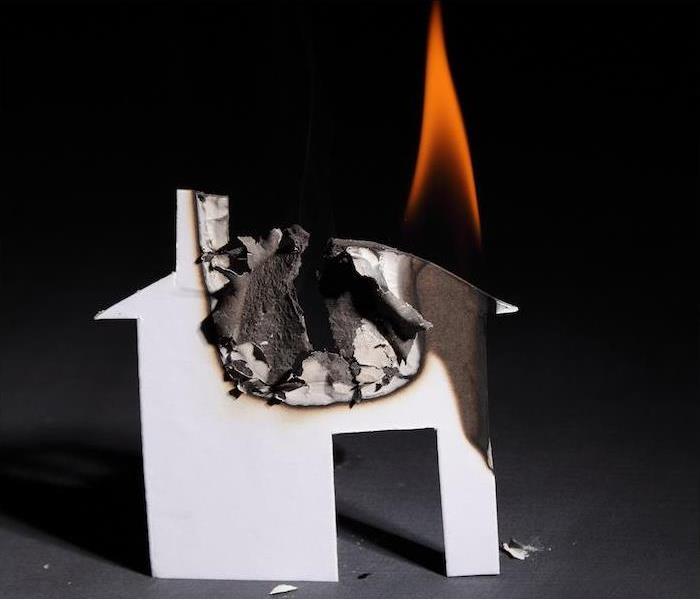The 4 Sides of the Fire Tetrahedron
2/3/2022 (Permalink)
 If your home or business has any damage, SERVPRO of Lowell is ready around the clock to help you recover.
If your home or business has any damage, SERVPRO of Lowell is ready around the clock to help you recover.
If you take three triangles and fold them around a fourth triangular base, you’ve got yourself a tetrahedron. This three-dimensional shape may not be one you think of often, but the fire community thinks about it all the time.
The fire tetrahedron is a visual aid that has come to represent the four things a fire must have in order to ignite and survive. These things must be present in order for fire to begin, and without any one of them, a fire can’t start or survive.
Fuel. The first triangle of the tetrahedron is fuel. A fire needs something consumable. Almost everything in your home or in nature is eligible. Fire has a ravenous appetite.
Heat. Consumable materials don’t simply ignite. They first have to be heated to a point at which they can ignite. Once they reach that point, all they need is for the other elements to fall into place.
Oxygen. Fires can’t happen in a vacuum, because they require oxygen. As a fire ignites and grows, it actually consumes the oxygen from the atmosphere in which it burns. This perpetuates the fire and simultaneously creates carbon monoxide, which is one reason why nighttime fires in homes are so deadly.
Chemical Chain Reaction. This one’s a little more complicated, but the long and short of it is that an uninterrupted chain reaction between the fuel, the heat and the oxygen not only happens, but must happen if a fire is to live.
Cool it. Cooling down the fuel source is a common way to stop fires. If you’ve ever dumped a bucket of water on a campfire, this is how it worked. Restoring the thermal balance to the burning material by decreasing its temperature keeps a fire from being able to continue.
Smother it. If you’ve ever put out a candle by putting a lid on it, or stopped a stovetop fire by the same method, this is what you’ve done. Without that influx of oxygen, the fire dies.
Starve it. If a fire has nothing to eat, it dwindles and dies. This can be accomplished both by removing fuel sources from a fire’s path and, in the case of wildfire containment, by scorching an area around the fire, leaving it no more fuel to burn outside that circle.
Interrupt the chain reaction. Scientists have found that certain gases and chemicals can cause a break in the series of reactions a fire needs to perpetuate itself. Some of these, while highly effective, have been discontinued because of an acute impact on the environment, but the use of safer alternatives continues in fire extinguishers of specific types, made mostly to snuff electrical fires.
If the fire tetrahedron makes a wreck of your home or business, we’re ready around the clock to help you recover. Contact SERVPRO anytime for fast, thorough cleanup and recovery after a fire.

 24/7 Emergency Service
24/7 Emergency Service